This post is a continuation of things we did in a color class I taught. This one didn’t publish promptly, so you might want to read the other (June 11th) post first.
After learning about warm and cool colors, we learned about opposite colors and similar colors. These are easy to identify by looking at a color wheel. Opposite colors have opposite locations and similar ones have similar ones.
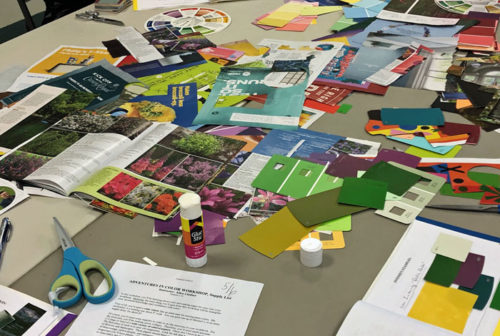
Still working with community papers each table of students made pages as examples of these additional concepts. We saw some of these as favorites during our mid-afternoon “field trip.”
These colors are similar: yellow-green, green, blue-green, and blue. There are MANY other examples! This combination is considered an easy one to work with.
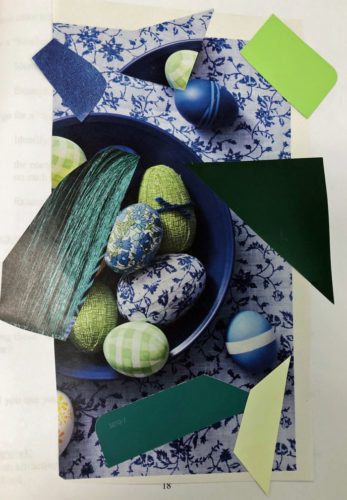
Students also learned about the idea of expanding a concept. Below is an example of an expanded complementary/opposite combination: yellow-green with it’s opposite color, red-violet. But, the adjacent colors have also been added: red, and violet. It has the drama of an opposite color scheme but with even more interest.
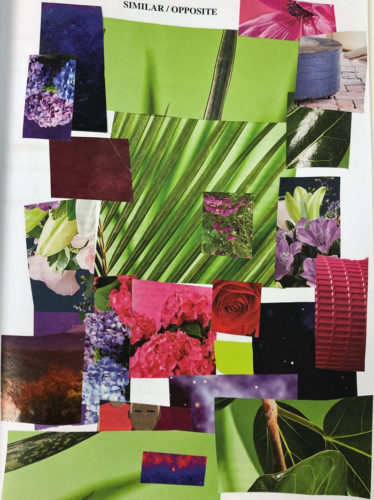
And here’s another: blue-green with its opposite color, red-orange. But, with the addition of red and orange. Love these!
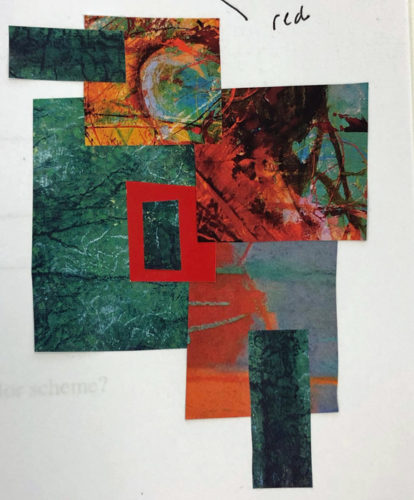
We also played around with idea of a “near” combo. So, this is a NEAR expanded complementary. The complement of yellow-orange is blue-violet, which we see. Two more colors have been added, but they’re all toward the green side of the color wheel: blue, and blue-green. It has the drama of a dead hit, but with some nice variation.
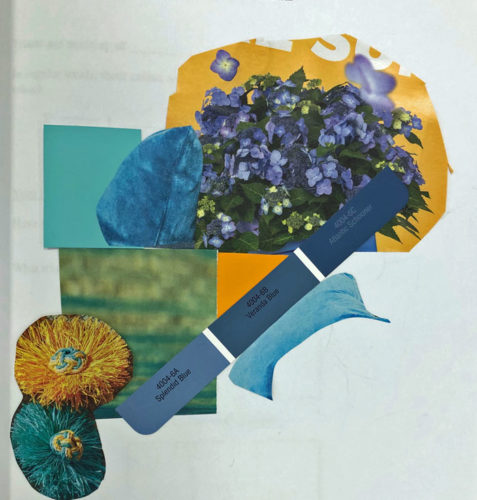
The weather was PERFECT that day, so some of us drug tables outside for lunch. It was delightful!
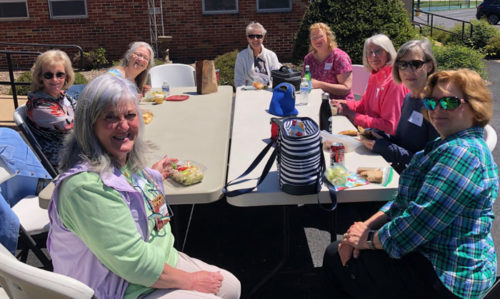
It was an exhilarating and fun day for all of us.
Ellen Lindner
P.S. The correct art speak, which I don’t necessarily use in my class: opposite = complement, similar = analagous.

I always love your color studies and examples. The outside class in mild weather looks wonderful.
Yes, it was great, Martha.